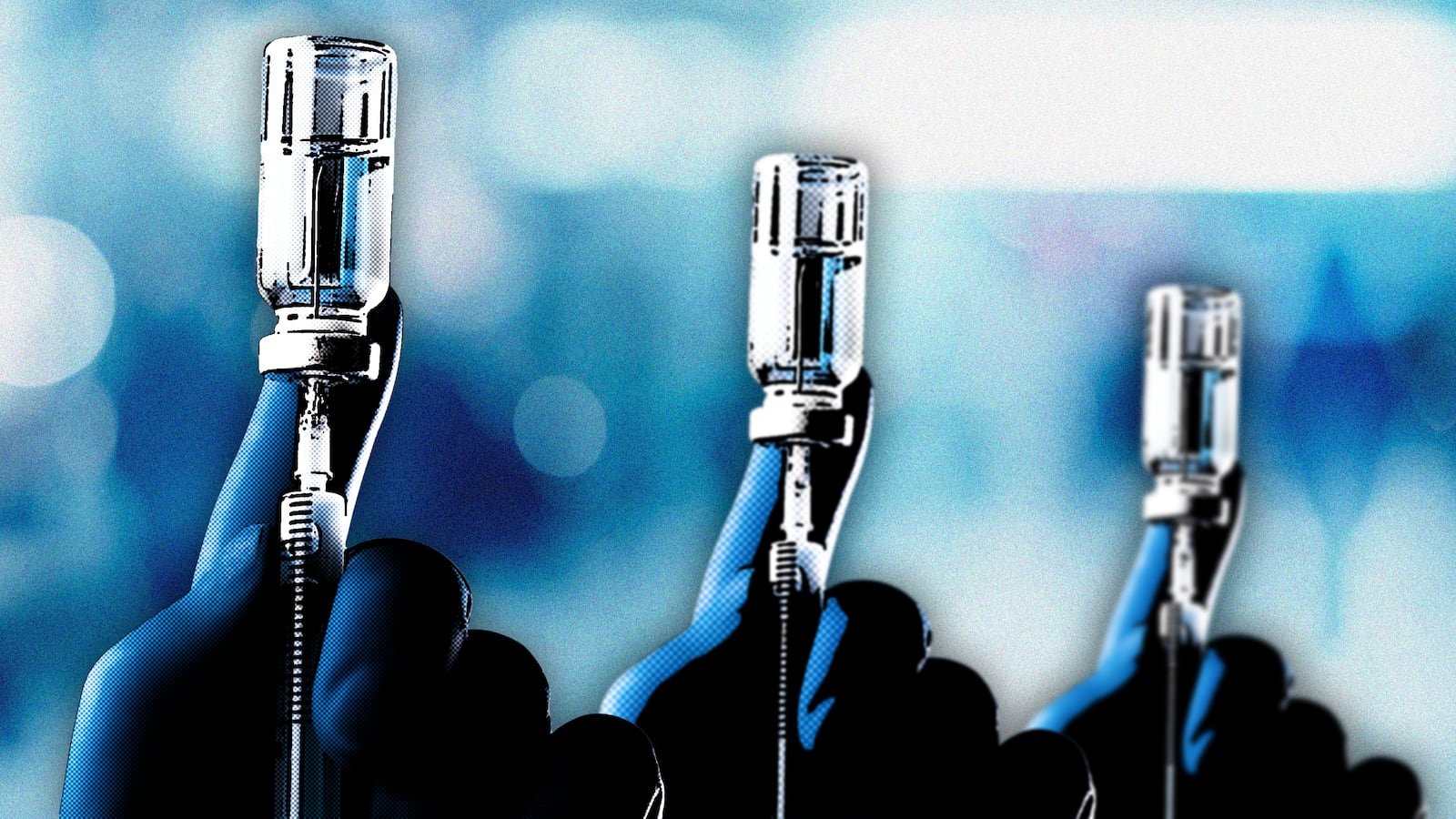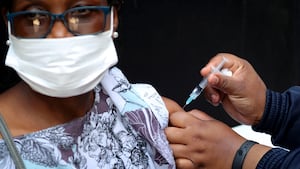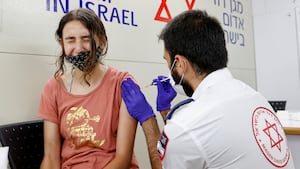The two messenger-RNA vaccines for COVID-19 are highly effective. At least early on.
But owing to the spread of new and more virulent variants of the SARS-CoV-2 pathogen, the natural tendency of some vaccinations to wane over time and the rushed way countries have administered vaccine doses, the mRNA jabs from Pfizer and Moderna have been getting noticeably less effective lately.
Now there’s a consensus forming among experts that the initial two doses of mRNA aren’t enough on their own. A booster shot isn’t just a good idea for a select few with weak immune systems or jobs that expose them to unvaccinated people. Boosters should be standard for everyone.
In other words, the mRNA vaccines aren’t really two-dose vaccines—at least not the way we’ve been administering them. “Science is telling us we need three doses,” Ali Mokdad, a professor of health metrics sciences at the University of Washington Institute for Health, told The Daily Beast.
For that reason, “booster” is the wrong word to describe the third shot of mRNA, Mokdad said. “I don’t like to call it a booster. It’s the third dose.”
The problem is that, in most countries, health authorities aren’t communicating that idea to the public. In many countries where the mRNA vaccines account for a significant proportion of jabs, officials continue to frame third shots as optional add-ons rather than the last dose in a three-dose regimen.
“The big mistake was in communications,” Peter Hotez, an expert in vaccine development at Baylor College, told The Daily Beast. As a result, third doses are lagging in the U.S. 59 percent of Americans have gotten either two doses of mRNA or the single-shot Johnson & Johnson vaccine, but just 18 percent of the U.S. population has gone back in for a third shot.
This failure of communication and the resulting slow third-shot uptake continue even as cases are beginning to rise again. After weeks of steady declines, the rate of new COVID infections is increasing again in the U.S. and across the northern hemisphere. The U.S. Centers for Disease Control and Prevention tallied around 93,000 cases a day last week, up from just 64,000 a day a month ago.
The cooling weather is a factor. In the winter, people spend more time indoors in poor ventilation —ideal conditions for spreading an airborne virus. New and more dangerous variants such as Delta and its subvariant Delta Plus are probably also factors—it is too early to say what impact will be made by the latest variant of concern, Omicron.
The unvaccinated are the most vulnerable, of course. However, declining immunity among the vaccinated means breakthrough infections are becoming more likely.
The decline in antibodies is, in part, due to the way we’ve spaced doses. The U.S. Food and Drug Administration recommends people get their two prime doses of Pfizer or Moderna three weeks apart. Six months after their second dose, the FDA says they should consider getting boosted. U.S. residents five years old and up are eligible for the initial doses. The FDA has cleared people 18 and older for boosters.

Requiring three doses for a single course of vaccination isn’t unusual. “Most viral vaccines are three doses,” Jeffrey Klausner, a professor of medicine and public health at UCLA who previously worked at the CDC, told The Daily Beast. But if you’re going to stick with just two doses, you’d want to wait more than three weeks between shots.
A longer wait between jabs would give your immune system ample time to produce a “primary immune response” from the first shot before you get a second shot for an even stronger “secondary immune response.” With a strong secondary immune response, you might not need a third shot—a booster—until many months later, if ever.
The FDA’s front-loaded vaccine strategy, absent a mandatory third dose, isn’t ideal for long-term immunity. But there’s a reason the agency pushed it. Getting both doses of a two-shot vaccine just three weeks apart produces a rapid, short-term build-up in antibodies.
The strategy made a lot of sense in late 2020 when the FDA first authorized the mRNA vaccines for widespread use, the first regulatory steps in what soon expanded into a global vaccination effort. People were dying in droves—two or three thousand a day in the U.S. alone in late 2020 and early 2021, compared to around a thousand a day now
The world needed protection fast. “We spaced [the] first two doses close together to rapidly immunize vulnerable populations,” Hotez tweeted.
Now, with a lot more data, we’re beginning to realize we’re paying a price for that rushed rollout. Eleven months after the FDA authorized the mRNA vaccines for widespread use, vaccine-induced immunity appears to be dropping, a lot.

A Palestinian ministry of health employee displays vials of the the Pfizer/BioNTech vaccine.
Hazem Bader/AFP via GettyOne study, published in Science early this month, found that Moderna’s effectiveness against infection declined from 89 percent to 58 percent after six months. Pfizer’s protection dropped from 87 percent to 43 percent.
All over the world, health officials are beginning to worry. “Relatively recent studies showing waning antibody levels have prompted new policies recommending boosters for everyone 18 and older,” Irwin Redlener, the founding director of Columbia University’s National Center for Disaster Preparedness, told The Daily Beast.
Some governments are moving more quickly, and forcefully, than others.
Israel was the first country to authorize a booster for the Pfizer vaccine, back in July. And in early October, Israeli regulators went even farther, and required a third dose in order for someone to be considered “fully” vaccinated, a prerequisite for obtaining a vaccine passport that gives the holder unrestricted access to businesses, events and travel.
Millions of Israelis rushed to get their third shots.
The effects were dramatic, according to a new study that appeared online in October. “Confirmed infection rates were ~10-fold lower in the booster versus non-booster group,” the authors wrote. The benefit was even greater for older Israels. Infections dropped by a factor of 19 for people over 60, and by a factor of 22 for the 40-to-60 age group.
The FDA by contrast has slowly expanded third-shot eligibility over the last month or so, finally authorizing all adults last week.
“Streamlining the eligibility criteria and making booster doses available to all individuals 18 years of age and older will also help to eliminate confusion about who may receive a booster dose and ensure booster doses are available to all who may need one,” Peter Marks, director of the FDA’s Center for Biologics Evaluation and Research, said in a statement.
That soft language belies the growing consensus that we probably all need a third jab, and fast. But if three doses makes for a single round of vaccination with primary and secondary immune responses, will we need a fourth dose as a true booster in, say, six months or so? And then a fifth and a sixth and a seventh and so on, forever?
“We will need to better understand the ideal intervals between doses,” Lawrence Gostin, a Georgetown University global-health expert, told The Daily Beast. “The other issue is how durable immunity is after the third dose. It may end up more like a flu vaccine that has to be given yearly, or even more often.”
Redlener said he’s made up his mind. “Regular boosters will be the new reality.”
But Hotez said he disagrees. Secondary immune response from a third dose of mRNA, taken six months after the initial two doses, should be sturdy enough to last … well, forever, he tweeted. “I don't necessarily think regular boosters will be required.”








